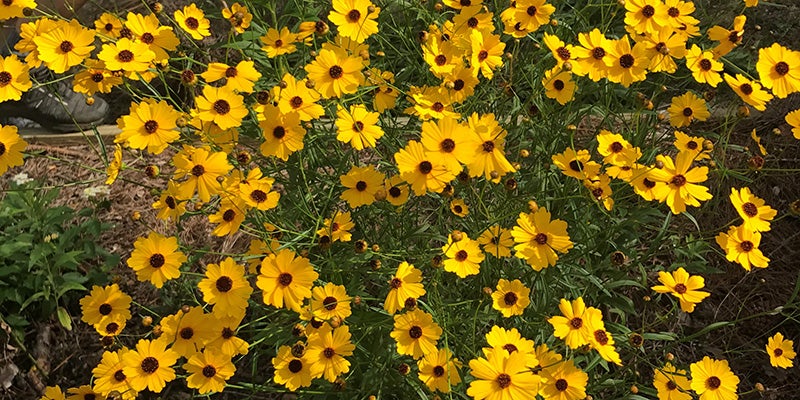Planning for planting projects throughout the year
Published 7:00 am Wednesday, August 19, 2020

- low Maintenance: There are many species of Coreopsis that can be grown from seed in landscape beds to give quick coverage. They provide great low-maintenance color, and continue to re-seed as they mature.
By Pat Drackett
Crosby Arboretum Director
”But isn’t the planting season over now?” This question was posed to me last week by a friend who had recently discovered the joys of bringing home plants and installing them into her yard, while we were discussing possibilities for plants in a future hedge. She had great fun this spring selecting plants for specific purposes (whether to produce fruit or just to look pretty on her deck) and has been excited to already be reaping the rewards of watching them doing well and growing in their new locations.
While it is certainly true that sweltering summer days are enough to keep most sensible folks indoors, and to logically deduce that planting season is indeed over for another year, the Arboretum’s Green Team volunteers, a group of seasoned gardeners, would tell you that planting – and gardening, weeding, pinching, transplanting, selective pruning, watering – and a myriad of other tasks still beg to be done in summer. They simply make good use of the first few – cooler – hours in the day!
If you regularly read this column, you will also most likely have learned about the fall-winter “planting season”. Cooler temperatures offer ideal conditions for installing new plants into your landscape due to the long time period ahead for roots to become established before hot temperatures return. But for those who don’t mind perspiring, summer planting is perfectly fine!
With the revelation that plants can be planted and fiddled with on a year-round basis, one can draw some conclusions. For example, methods used in the springtime to get your new plants off to a good start will provide insurance against the need for summer maintenance and give them the best chance for thriving in hot temperatures once you bid them goodbye and retreat into your air conditioned home.
For example, mulching around the bases of newly planted trees and in garden beds will slow down the evaporation of water from the soil and reduce the need for watering your new plants.
Remember, the first year is the most critical in a plant’s life. Too little, or too much water can cause their demise, as roots take a while to expand into the surrounding soil and become established in order to be better able withstand periods of drought.
Choosing the right plants to begin with is also crucial. Before you bring your new acquisitions home, know if you have an area of your property that will provide them with the proper amount of sun and moisture they prefer. Researching the species you wish to purchase beforehand, and their maintenance requirements can make the difference in ending up with a low-care plant or a high-maintenance nightmare.
The MSU Extension Service website has much research-based information specific to Mississippi plants and gardening. See http://extension.msstate.edu/ and search by keyword, or begin at the MSU Smart Landscapes webpage to browse a variety of gardening topics that will get you off to a great start on your projects.
Even though the average homeowner may not prefer to garden in extremely hot or frigid temperatures, consider that landscape contractors install and maintain landscape projects year-round. The main factor is providing an adequate water regime for establishment. For small home gardening projects, there is no need to install an elaborate automatic irrigation system. Choose a common sprinkler, or soaker/sprinkler hoses, and add an inexpensive manual timer to your “system” that covers your project area.
One useful type of sprinkler type is a large rotor mounted on a metal tripod, commonly called a “rain tower”. These are designed to operate on low water pressure and can cover wide areas. Look for these at retail horticultural supply websites, and choose ones having primarily metal parts rather than plastic for longer life. These sprinklers are also great for watering established lawn areas in dry spells, or for plantings in wooded areas where tree roots make trenching for irrigation lines impossible. I’ve seen homeowners with large lawn areas and extensive landscape beds survive just fine without an irrigation system using several of these tripods which are moved several times a day.
Currently at the Arboretum’s “deck sale”, we are offering a selection of native perennials in small containers. Many are fall-blooming pollinator and butterfly-attracting plants. These small sizes require much smaller planting holes than the one-gallon containers typically carried at our spring and fall sales and are around half the cost.
For information on the Arboretum visit www.crosbyarboretum.msstate.edu<http://www.crosbyarboretum.msstate.edu>. Our public garden is open Wednesday through Sunday. The office is open 9 a.m. to 5 p.m. and our exit gates close at 4:30 p.m. We are located in Picayune at I-59 Exit 4, at 370 Ridge Road.



